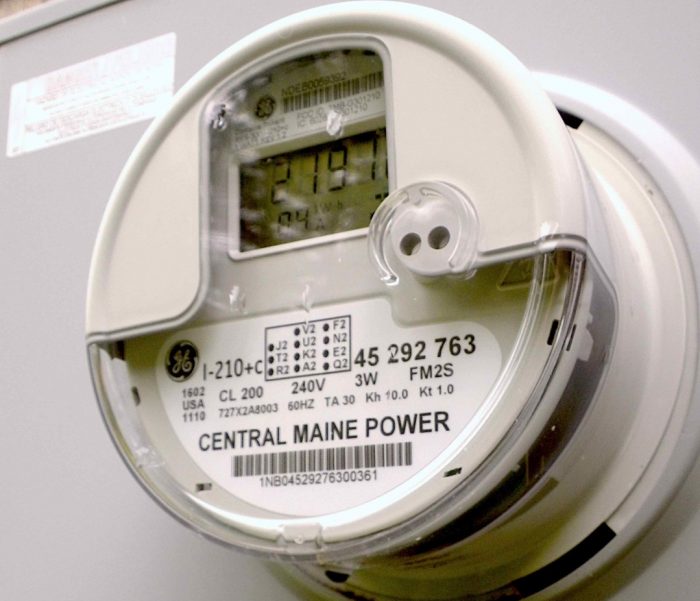
Americans want their electricity to be cheap, clean and reliable, but that trifecta is becoming more elusive, thanks to climate change. According to a 2021 report by the nonprofit research organization Climate Central, more than 80% of reported major outages across the U.S. from 2000 through 2021 were caused by weather extremes, such as heat waves, wildfires and tropical storms.
We are an economist and an electrical engineer investigating how increased use of two-way smart meter technology can be used to reduce greenhouse gas emissions from the electricity sector and help the economy withstand climate-driven weather extremes. As we see it, adapting the power system to increasingly volatile weather will require a combination of user-friendly technologies and economic incentives.
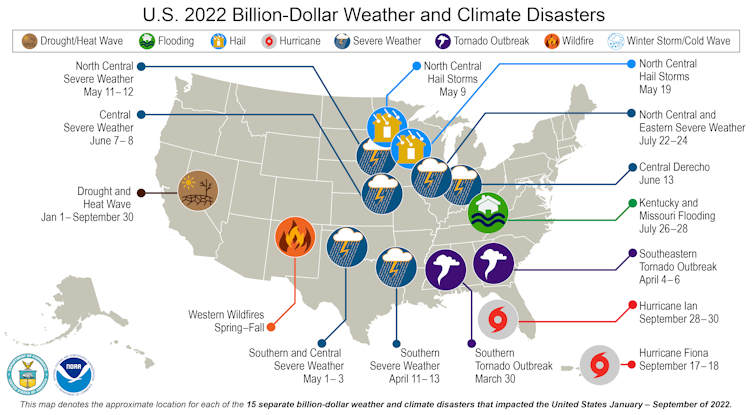
The promise of smart meters
Until recently, most U.S. households had mechanical electric meters. Utility employees would visit each home to take a monthly reading that the company would use to calculate the household’s bill.
Starting in the early 2000s, utilities began rolling out smart meters, also known as advanced metering infrastructure, or AMI. These electronic devices measure a home’s electricity consumption and communicate it to the utility wirelessly every few minutes.
Communication between the smart meter and the utility is a two-way channel, which enables the utility to remotely connect or disconnect power to a home. The U.S. Department of Energy estimates that as of 2020, over 90 million residential AMI systems had been installed nationwide. About two-thirds of electricity meters across the U.S. are now smart meters.
For utilities, smart meters reduce the cost of meter reading and make it possible to detect and respond to power outages quickly. The fine-grained usage data that smart meters provide can help utilities better understand and predict customer demand using data analytics and artificial intelligence tools.
With this information, utilities can manage their operations to help prevent blackouts due to lack of generating capacity.
Utilities are partnering with companies like Opower to provide customers with mobile apps and reports that help them monitor and understand their electricity usage. A typical report may allow a customer to compare her usage over 12 months with her 100 closest neighbors and 20 most energy-efficient neighbors.
Studies show that receiving such reports leads consumers to reduce their electricity consumption by about 2%. Reducing peak demand by a few percentage points can enable utilities to avoid blackouts during high demand periods.
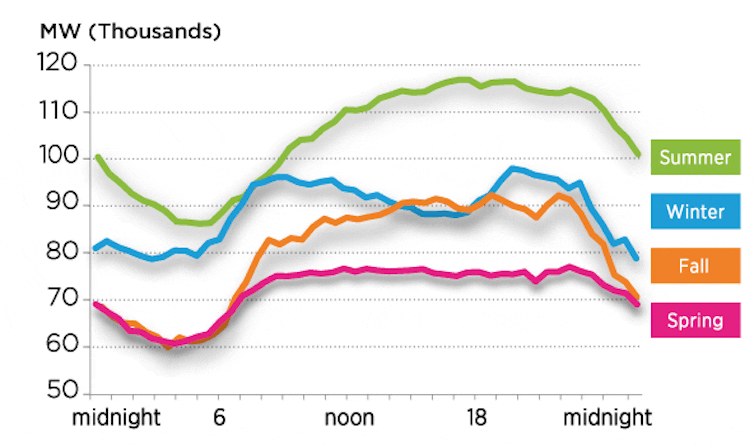
During extreme weather events such as heat waves, utilities routinely issue conservation appeals to their customers. Smart meter data analytics can be used to pinpoint which customers actually respond to these requests.
Smart devices and dynamic pricing
Utilities are beginning to pair smart meters with other new technologies, pricing incentives and social “nudges” to encourage electricity conservation.
For example, companies such as Google, Ecobee, Emerson and Honeywell are now designing smart thermostats that are preprogrammed to meet individual customer preferences. As the temperature changes throughout the day, the thermostats take action autonomously, such as precooling the home when power demand is lower. It has been estimated that smart thermostats can reduce energy consumption by 10% to 15%.
It’s possible to further manage energy use by introducing dynamic pricing—real-time price shifts that are directly reflected in consumers’ electricity bills. Currently, most U.S. households pay a flat rate for every kilowatt-hour of electricity they use, regardless of how much it costs to generate it.
In the simplest version of dynamic pricing, all electricity consumers would face a higher real-time price for electricity when bad weather reduces the supply of power. For an electric utility that has deployed smart meters, the meters would signal to customers—perhaps via text message—that the price of power will increase over the next six hours. This would alert consumers to shut down computers and reduce discretionary power use.
Pricing experiments in Washington, D.C., and other cities have demonstrated that consumers reduce their electricity consumption when they face price spikes during peak electricity demand periods. If enough people and firms participated, aggregate demand for power would decline, reducing the system-wide risk of blackouts.
This strategy is also good for the environment. Utilities often resort to high-polluting power plants that run on fossil fuels when demand exceeds supply. These plants contribute to local air pollution and global greenhouse gas emissions.
Introducing critical peak pricing for electricity reduces this need for dirty power. Averting power blackouts also will reduce reliance on home generators, which often emit harmful particulate air pollution.
Keeping dynamic pricing fair
Clearly, some consumers can respond to price spikes more easily than others. For example, a person who uses home dialysis cannot easily reduce her electricity consumption on short notice.
Highly volatile electricity pricing without safeguards could trigger public backlash. This happened during the 2021 deep freeze in Texas, which exposed some consumers to astronomical electricity bills during a life-threatening cold wave.
Economists have devised pricing strategies to encourage energy conservation without price gouging vulnerable people. For example, a utility can use smart meter data and artificial intelligence to identify customers who are major electricity consumers but also respond to price increases by reducing their power usage. These consumers could be offered an annual financial incentive in return for enrolling in critical peak pricing programs.
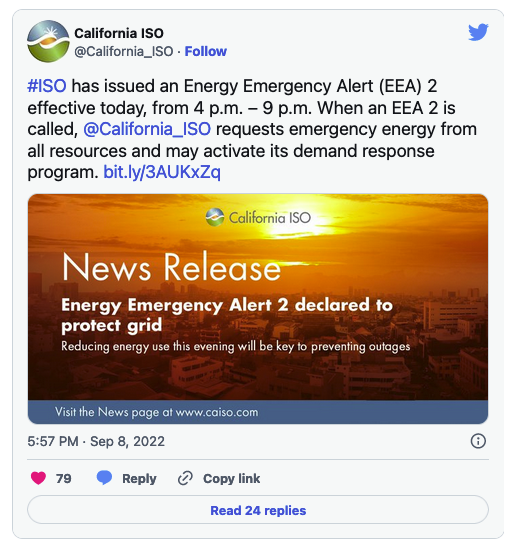
Customers who voluntarily accept the deal would face price spikes on perhaps 15 days a year. They could protect themselves from large energy bills by investing in energy conservation measures, such as installing insulation, energy-efficient appliances or solar panels.
In aggregate, their expected response—reducing their power use during peak periods—would help to reduce blackout risk. Federal money from the recently enacted Inflation Reduction Act could be used to pay the upfront incentive fees.
This approach reflects the fact that a small percentage of electricity consumers typically account for a large share of total demand. If 10% of consumers account for 30% of an electric utility’s demand, and that group can be encouraged to reduce its consumption by 50%, then aggregate demand will decline by 15% during critical peak pricing events. The other 90% of consumers would not be exposed to price spikes.
Clean energy funding in the Inflation Reduction Act will represent the single largest investment in climate and energy in the U.S. to date. We believe targeting some of this funding toward programs that encourage adoption of smart energy measurement devices, along with introducing real-time price signals of resource scarcity, will help advance the clean energy transition.
Matthew Kahn is Provost Professor of Economics and Spatial Sciences, USC Dornsife College of Letters, Arts and Sciences. Bhaskar Krishnamachari is Professor of Electrical Engineering at the University of Southern California. This article was originally published at The Conversation.
Weekly Newsletter
Get building science and energy efficiency advice, plus special offers, in your inbox.





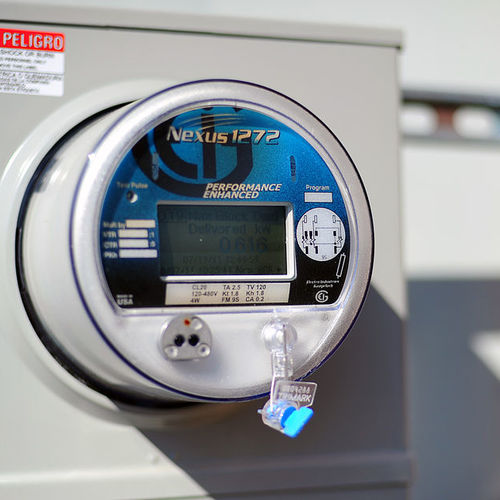
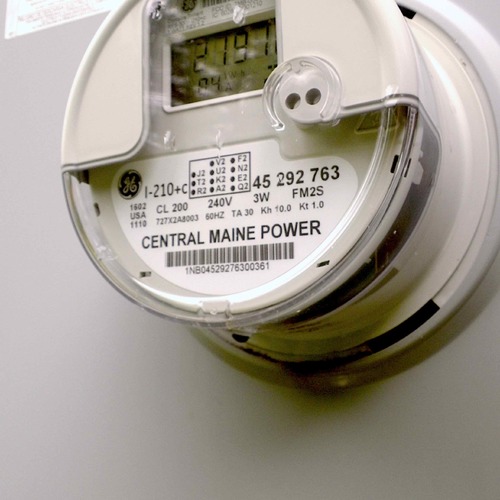







5 Comments
What we could use is time of usage (during the day) pricing. Consumers would pay the full rate during daytime demand but pay the off peak rate when applicable. This would reflect better the actual cost for utilities to provide electricity at different times during the day and give consumers an incentive to utilize off peak strategies. Many utilities have off peak rates but require a lot of equipment and expense for storing the energy (heat). Just bill us fairly for the time of use for our electricity and then our smart thermostats can heat our homes and buildings according to the economics.
We could adapt a bin method type system for time of day load demand and fair metering.
https://www.sciencedirect.com/topics/engineering/bin-method#:~:text=The%20Bin%20method%20calculates%20the,determines%20the%20yearly%20energy%20requirement.
Thank you for this article,
Doug
> What we could use is time of usage (during the day) pricing. Consumers would pay the full rate during daytime demand but pay the off peak rate when applicable.
Isn't that exactly what the article describes?:
"It’s possible to further manage energy use by introducing dynamic pricing—real-time price shifts that are directly reflected in consumers’ electricity bills"
Much of California already has such rate structures, with peak rates being in some cases 16% higher than off-peak rates.
Yes, I am all for "dynamic pricing" of electricity for residential customers. To get consumers to sign on to utility programs to reduce peak loads we need transparency. Give the consumer a financial incentive to adjust their daily electrical usage to keep bills in line and help the utilities balance the load. Too much shifting around in the industry, case in point, the buyback of residential produced solar. With modern controls the residential customer could easily shift some of the space and water heating load to off peak hours. This would provide a bit of morning residential reserve just when the daytime peak load begins. Electric utilities need to offer rate structures (adjusted for inflation of course) that go out 10, 15, 20 years so those considering a shift to all electric can run the ROI numbers. It would also help in defining a potential payback for building envelope improvements.
Most of us are too skeptical to believe the move to time of use billing plans are revenue neutral. We see it as a way to collect more dollars for generating the same number of watts.
In the 2021 Texas power crisis the government capped the time of use rates at just under $10 a kWH. People that thought they would save a few dollars on their bills got bill 70 times what was the normal.
https://www.nytimes.com/2021/02/20/us/texas-storm-electric-bills.html
Walta
> Most of us are too skeptical to believe the move to time of use billing plans are revenue neutral. We see it as a way to collect more dollars for generating the same number of watts.
Generation is only part of the cost of the electric grid. Maintenance and upgrades to the grid itself are fixed costs that have to be considered, and given that much of the electric grid is over a century old, all else equal, total costs will increase if providing reliable power is a requirement.
There may be more and less efficient ways to achieve reliability (i.e. distributed micro-grids vs more centralized generation and transmission capacity), but there is no collective way forward that doesn't involve significant investment.
That said, $10.00/kWh is crazy town for consumer retail rates. However, you can still shape demand with less variable time-of-use-rates. In California, while the rates structures are far from ideal, I have a time of use rate that varies between $.28/kWh off-peak in the winter to $0.49/kWh on-peak in the summer [1]. With this rate structure, by using common sense load shifting, I pay an average of $0.29/kWh for grid electricity. That's very high by Texas standards, but not by CA standards, considering that our aging and poorly maintained distribution grid is a massive liability coupled with climate change and wildfire risk.
1. https://www.pge.com/pge_global/common/pdfs/rate-plans/how-rates-work/Residential-Rates-Plan-Pricing.pdf
Log in or create an account to post a comment.
Sign up Log in